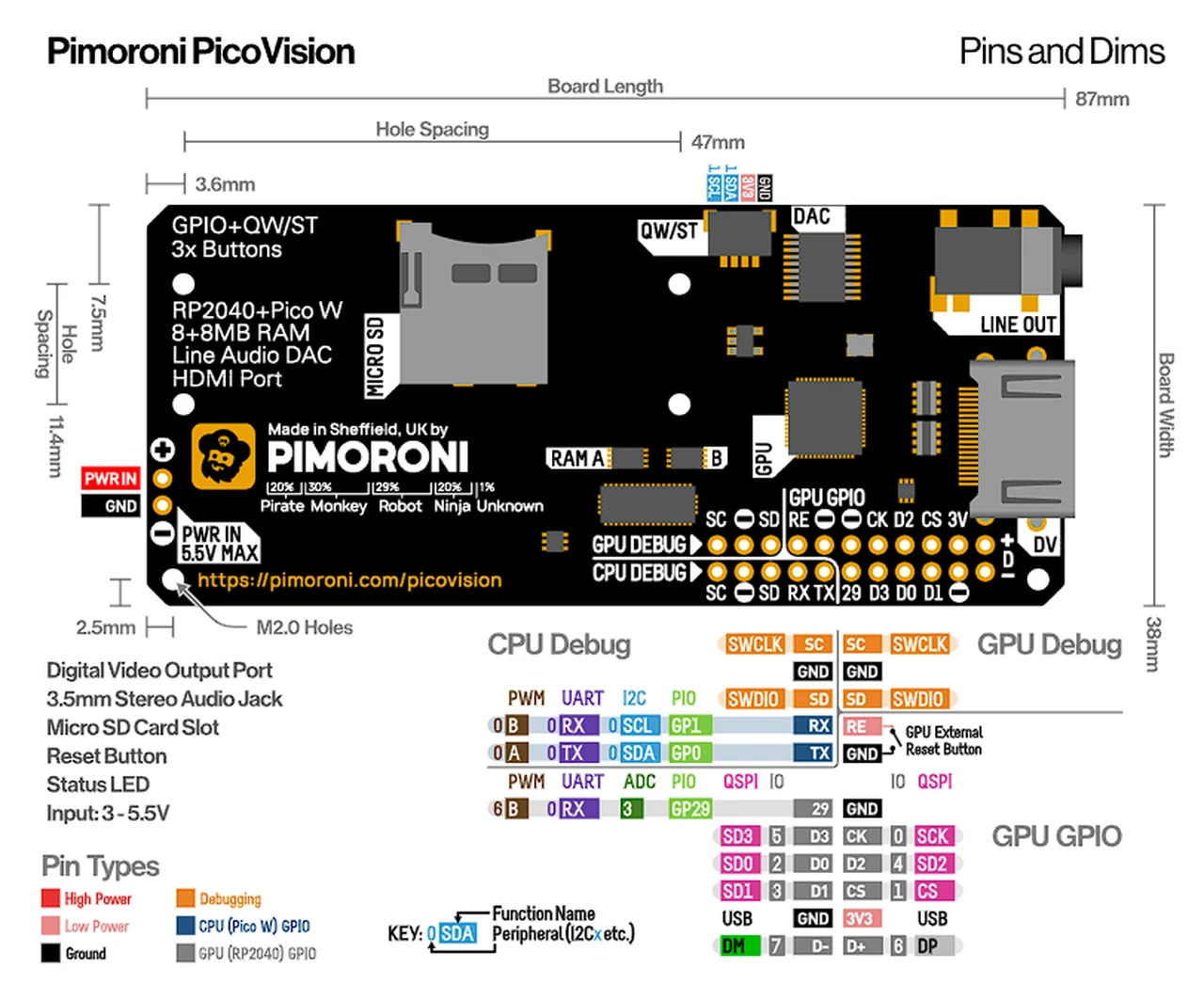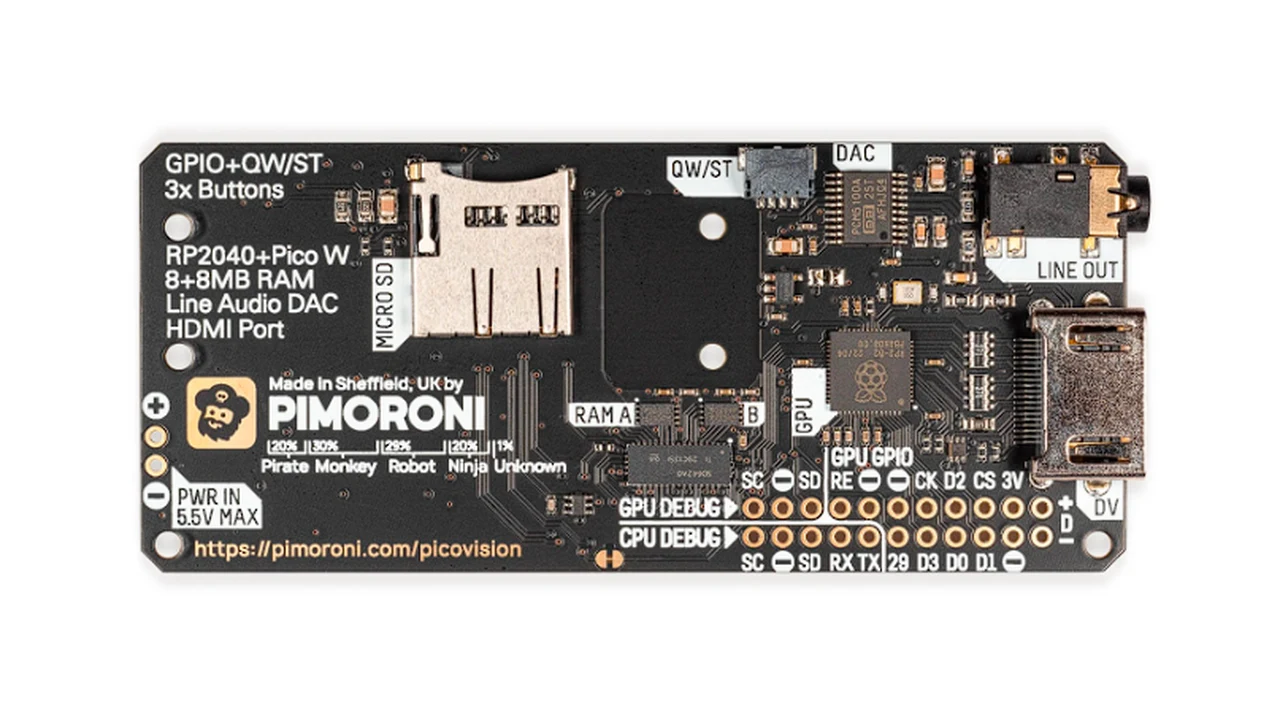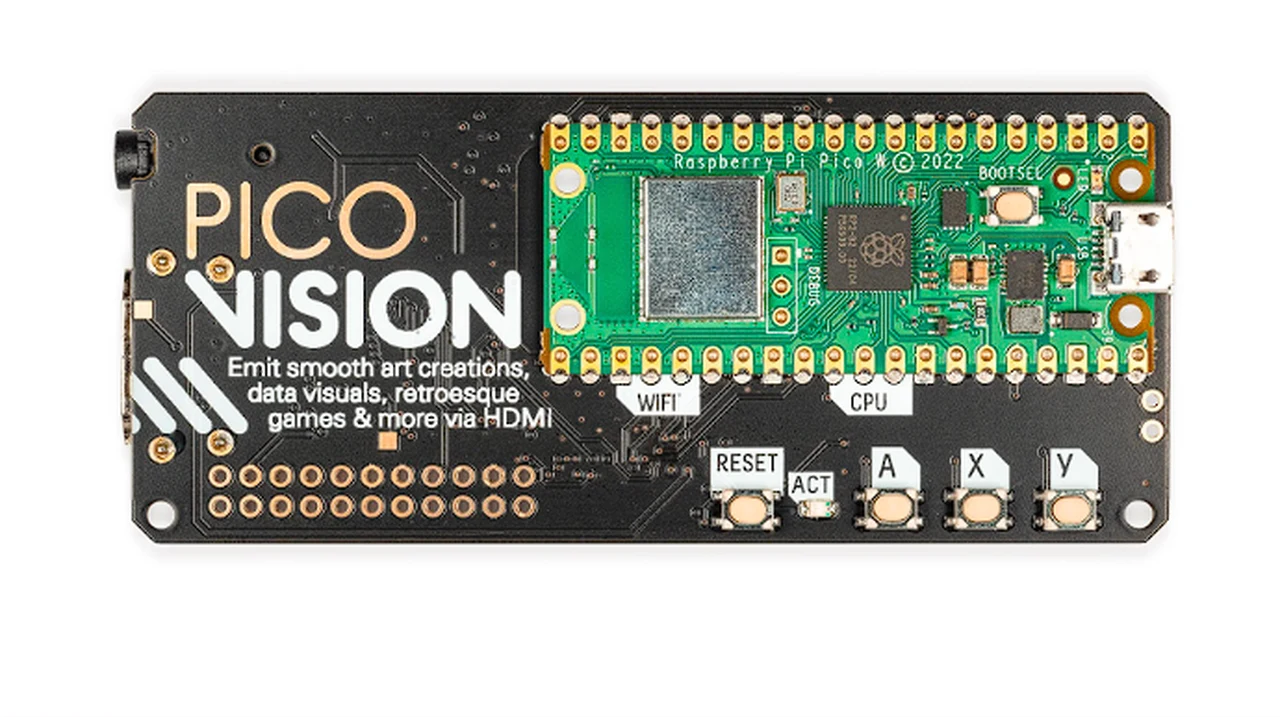PicoVision, a small Raspberry Pi powered board equipped with two RP2040 chips. These chips, developed by the development team at Raspberry Pi, serve as the central processing unit (CPU) and graphics processing unit (GPU) respectively. The CPU executes code and interacts with other devices, while the GPU is responsible for generating high-resolution animations and digital video (DV) signals.
The unique configuration of the RP2040 chips in the PicoVision uses two Pseudo Static Random Access Memories (PSRAMs) as a front and back buffer. Essentially, while the CPU writes to one PSRAM, the GPU reads from the other, applies effects, and generates the DV signals. This simultaneous operation significantly enhances the device’s performance and capability to handle complex tasks.

One of the standout features of the PicoVision is its high-resolution DV output. This is possible thanks to the GPU, which was developed with the assistance of software wizard Mike Bell. The GPU can display high-resolution animations, making it an ideal tool for creating and running homebrew games, drawing digital art, recreating demos, visualising data, emulating CeeFax, and creating signage.
The PicoVision is available to purchase priced at £34.50 p from Pimoroni and is equipped with a variety of connectors and slots to facilitate its use. It features an HDMI connector, allowing it to be plugged into any HDMI display. Additionally, it has line out audio, a microSD card slot, and a Qw/ST connector. The device also includes on-board reset and user buttons, adding to its user-friendly design.
For those interested in programming, the PicoVision offers the flexibility of using either C++ or MicroPython. Furthermore, users have access to PicoGraphics libraries, PicoVector, and PicoSynth, providing a wide range of tools to create and customize their projects.

The PicoVision leverages the features of the Raspberry Pi Pico W and RP2040. The Raspberry Pi Pico W Aboard, which serves as the CPU, features a Dual Arm Cortex M0+ with 264kB of SRAM, 2MB of QSPI flash supporting XiP, and 2.4GHz wireless / Bluetooth 5.2. The RP2040, functioning as the GPU, mirrors the Dual Arm Cortex M0+ with 264kB of SRAM, connects to the CPU as an I2C peripheral device, and uses 2 x 8MB PSRAM chips for frame double-buffering.
Additional features of the PicoVision include digital video out via the HDMI connector, a PCM5100A DAC for line level audio over I2S, a microSD card slot, three user buttons, a reset button, a status LED, and a Qw/ST connector. Moreover, the PicoVision comes fully-assembled, making it a convenient and accessible tool for users of all levels.
In summary, the PicoVision is a versatile and powerful digital video stick. Its dual RP2040 chips, high-resolution DV output, and range of connectors and programming options make it a valuable tool for a variety of applications. Whether you’re a digital artist, a game developer, or simply a tech enthusiast, the PicoVision opens up a world of possibilities. For a more in-depth review jump over to the Raspberry Pi Foundation website.
Filed Under: Hardware, Top News
Latest aboutworldnews Deals
Disclosure: Some of our articles include affiliate links. If you buy something through one of these links, aboutworldnews may earn an affiliate commission. Learn about our Disclosure Policy.







